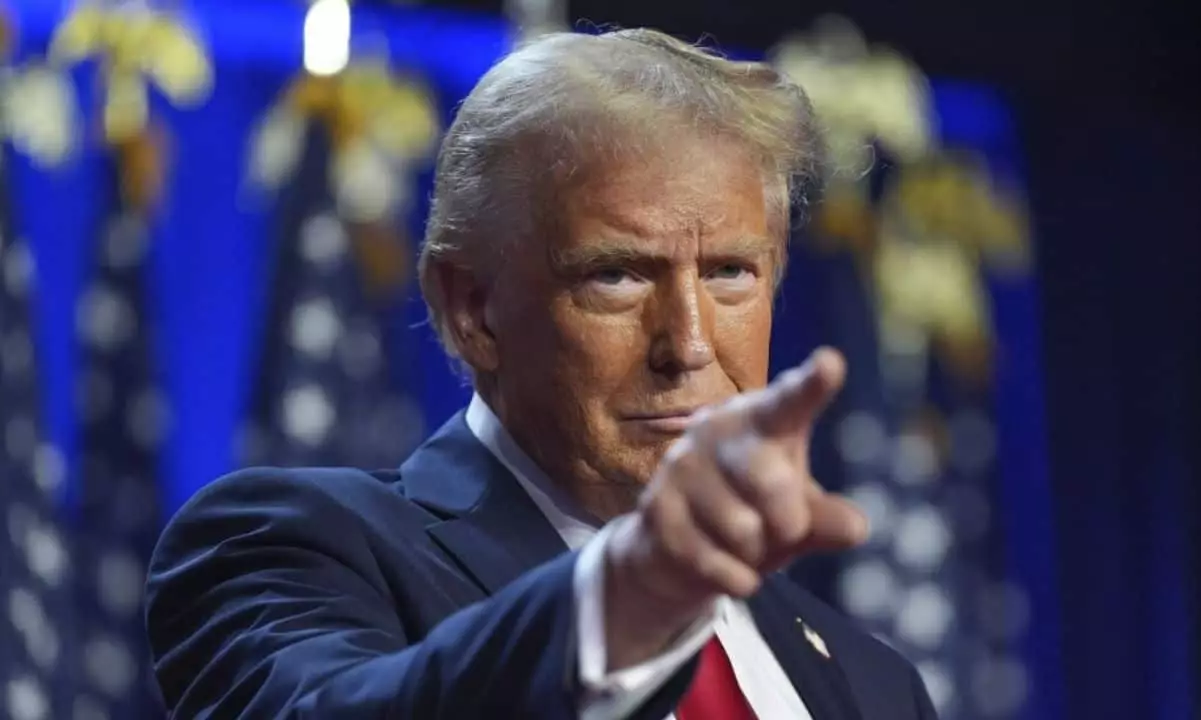On March 23, a cryptocurrency whale experienced a monumental setback, suffering a staggering loss of $207,000 within just one hour after indulging in the Official Trump (TRUMP) meme coin. This case serves as a critical reminder of the volatility pervasive in the world of digital currencies. This particular investor had an earlier fortune, transforming an initial investment of 1.09 million USDC into an impressive $108 million by acquiring 5.97 million TRUMP tokens at a much earlier stage. Such meteoric rises can seduce even the most cautious investors, but the harsh reality is that ephemeral trends often give rise to unfathomable risks.
The catalyst for this financial misstep was none other than a tweet from former President Donald Trump proclaiming his love for the TRUMP coin—an endorsement that momentarily propelled the token’s value above $12.25. This underscores the inherent danger of allowing one’s investment strategy to be influenced by political figures, particularly when the asset in question is a mere meme coin. When the initial euphoria fades, as it invariably does, the floor can drop out from under even the richest of investors, leaving significant losses in its wake.
The Rotting Foundation of Meme Coins
The episode surrounding the TRUMP token is symptomatic of a broader malaise in the cryptocurrency market—the rise of meme coins. With their essential lack of intrinsic value, these coins thrive on fleeting social media trends rather than any substantive financial promise. Following the initial spike to above $70, the TRUMP token plummeted to around $11.92, echoing the sharp decline seen by fellow meme coin MELANIA, which soared to around $13 before nosediving to approximately $0.69. Such extreme volatility invites skepticism about the long-term viability of these assets, which not only capitalize on fleeting moments but also exploit the names of public figures with little regard for the genuine value they might create.
The ensuing political controversy is telling. Critics argue that these meme coins sullied Trump’s name while offering no real contribution to the cryptocurrency landscape. In response, Rep. Sam Liccardo’s introduction of the MEME Act aims to impose limitations on governmental figures from endorsing such volatile assets. This response isn’t just a mere knee-jerk reaction; it reflects a growing realization that meme coins operate without accountability under current regulatory frameworks. The SEC, having declared these coins as collectibles rather than securities, seems to be taking a hands-off approach which is as alarming as it is careless.
The SEC’s Shortcomings and the Need for Accountability
The Securities and Exchange Commission’s view on meme coins, categorizing them as off-limits from regulation due to their nature as community-driven assets, is curiously lenient. They argue that because these tokens are about fan engagement rather than tangible financial gain, they do not fall under the standard securities umbrella. However, the reality is that the explosion of meme coins has attracted an unprepared and often misled investor demographic—many of whom may lack the understanding required to navigate this perilous market.
This lax regulatory attitude invites unnecessary risks, promoting the illusion of “get-rich-quick” schemes that inevitably end in tears for unsuspecting investors. It raises the question of whether more stringent regulations are necessary to protect vulnerable segments of the investment community from the potential pitfalls that these assets pose. As the financial landscape continues to evolve, the case of the TRUMP whale serves as a cautionary tale—one that underscores the need for greater accountability and education in the wild realm of cryptocurrency.
In essence, the world of digital assets, particularly in the realm of meme coins, continues to be a treacherous one, fraught with excesses that can lead to devastating financial losses. Investors must tread carefully, for volatility is often lurking just beneath the surface.














